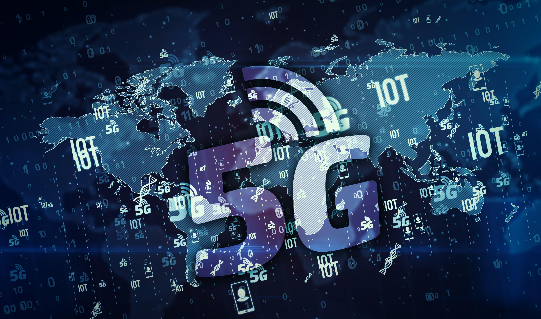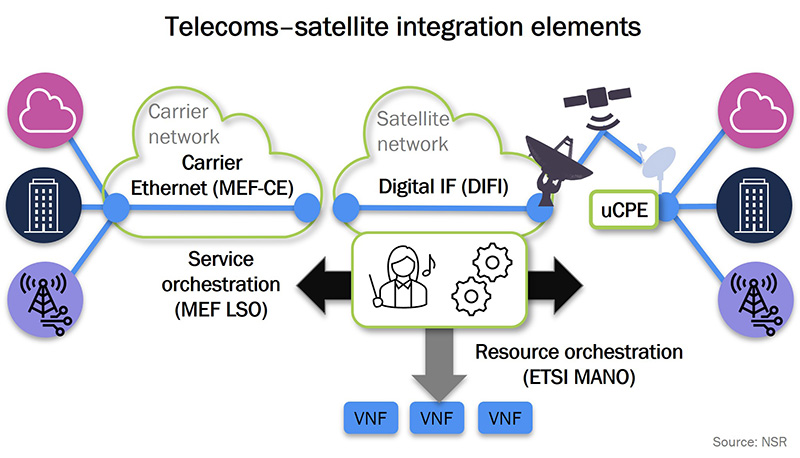5G ecosystem will be key to seamless integration of satellite and terrestrial networks

5G ecosystem will be key to seamless integration of satellite and terrestrial networks

Low Earth Orbit (LEO) satellite constellations (which orbit at altitudes between 160 and 2,000 kilometers above Earth) are an attractive solution for extending 5G connectivity to isolated, underserved and remote areas that lack ground coverage Program.
The increasing number of LEO satellite communication proposals in the telecommunications market has led to a growing need for more interaction between open and standardized ecosystems, such as the SAT 5G (EU-backed 5GPPP project) and the Metro Ethernet Forum ( MEF). This will help telecom operators and LEO satellite providers integrate their services more efficiently and flexibly to create a secure, heterogeneous satellite and terrestrial 5G network. Working in an ecosystem that supports standards-based frameworks will also help operators address the greater complexity of these network systems.
There are growing projects to expand 5G connectivity via low-orbit satellites, with increasing focus on ecosystems and standardization
Until recently, all cellular networks were limited to Earth, but non-terrestrial networks (NTNs) offer enormous potential for extending coverage. This is especially beneficial for the development of global 5G connectivity and enabling a wide range of emerging enterprise-grade 5G use cases. The latest 5G specification (Release 17) from the 3rd Generation Partnership (3GPP) includes support for satellite-based NTN for the first time. In the past, 5G standards have not been able to support the integration of satellite and terrestrial networks because 3GPP's mandate, at least initially, did not integrate key technology enablers outside 5G networks, such as edge computing or AI, as an inherent part of the architecture.
That has changed, however, and full interoperability between satellite and telecom network control systems will be a necessary first step toward the broader goal of full-satellite support for 5G. Progress towards these goals will be accelerated if stakeholders on both sides come together to collaborate on the ecosystem according to agreed criteria.
The EU-funded 5G Satellite and Terrestrial Network (SaT5G) project is a key example of an ecosystem supporting the development of standardized and integrated 5G and satellite communications network architectures. SaT5G will support the development of key 5G technologies by leveraging satellite capabilities such as virtual network function (VNF) delivery and partnerships with key industry partners. 1 Luxembourg-based LEO satellite provider SES SA is a participant in SaT5G, and in September 2022, it announced its commitment to building a European Space Agency (ESA)-funded European LEO satellite constellation and building an ecosystem, to create Europe's first space-based quantum key distribution satellite system, EAGLE-1. The project, to be launched in 2024, aims to create a highly secure satellite-based connectivity system for the European Union.
The Metro Ethernet Forum (MEF) defines more than 80 Carrier Ethernet standards to support digital transformation and is at the center of an important ecosystem initiative for LEO satellite providers. This is because MEF helps to facilitate interoperability of satellite and terrestrial networks (see Figure 1) at the coordination level and establish important standards needed to support 5G technology. LEO satellite providers such as Intelsat, SES, Telesat and OneWeb have all become participants in the MEF ecosystem. Figure 1
: Key Technology Elements Required for Satellite/Carrier Integration2

Partnerships between LEO satellite providers and operators are important to explore new and emerging NTN use cases.
Alliances between satellite providers and telecom operators help bridge the connectivity gap mobile users face in out-of-coverage areas. A recent wave of new partnerships between major telecom operators and active low-orbit satellite companies, according to Analysys Mason's Low Earth Orbit Satellite Tracker, shows that such alliances are vital to the development and rollout of emerging NTN use cases. Very important, including satellite-to-device propositions and expanding IoT services. These partnerships could expand the satellite business model while reducing the threat that satellite communications operators could pose to telecom operators when they compete directly for the same broadband customer base. Examples of recent partnerships between LEO satellite providers and telecom operators are listed below.
- Starlink and T-Mobile . In August 2022, T-Mobile US and Starlink announced a technology partnership to develop a direct satellite-to-device solution, expected to launch in 2024. Satellite-to-device is considered one of the biggest opportunities in the history of satellite communications, with market forecasts to generate more than $60 billion in revenue over the next 10 years. 3 Starlink will face competition from other low-orbit satellite providers in the market, including Lynk Global, which announced in September 2022 that it was testing the first 5G base station in space to deliver 5G signals to standard mobile devices.
- Omnispace and Smart (PLDT) . In August 2022, US-based Omnispace announced a partnership with Philippine mobile operator Smart (a subsidiary of PLDT) to explore interoperability between Smart's 5G network and Omnisspace's LEO satellites using the 3GPP-compliant 5G NTN standard. This comes after Omnispace launches its LEO satellite Spark-2 in April 2022. This collaboration creates a significant opportunity for 5G connectivity in rural areas, in addition to expanding the reach of the Philippines’ disaster relief network using IoT devices.
- Sateliot and Telefónica . In July 2022, Telefonica announced a partnership with Sateliot to integrate 5G LEO satellite connectivity with Telefónica's 3GPP standardized NB-IoT network Kite. This will provide Telefónica's customers in remote areas with expanded IoT connectivity, benefiting a range of businesses in the fields of agriculture, shipping and wind farms.
About the study: Analysys Mason's low-Earth orbit satellite tracker provides details of global low-orbit satellite suppliers with information on launch dates and target usage. Our recently released tracker includes a total of 24 LEO satellite providers and 28 examples of partnerships between LEO service providers and telecom operators. It also provides additional information on ecosystem participation.
1 European Commission (2020), 5G satellite and terrestrial networks.
2 NSR (March 2022), Telecommunications – Satellite Communications Digital Network Integration.
3 NSR (July 2022), Global Satellite Capacity Supply and Demand, 19th ed.